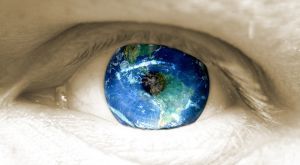A few days into a crunch to finish a major proposal at work, Jessica noticed her eyelids spasming periodically. She couldn’t make them stop. Eventually, a doctor diagnosed a case of blepharospasm.
What is Blespharospasm?
The National Eye Institute (NEI) states that this condition is an abnormal, involuntary blinking or spasm of an individual’s eyelids. The same abnormality is also known as Benign Essential Blepharospasm.
According to the National Institute of Neurological Disorders and Stroke (NINDS), the condition is a neurological disorder that’s progressive in nature. It falls under the umbrella of dystonia, a movement disorder characterized by muscle contractions that result in sustained eyelid closure, twitching or repeated movements.
Most cases begin gradually. Patients initially assume the spasms are linked to some type of eye irritation. As the illness progresses, spasms typically intensify. The patient finds his or her eyelids remain closed for extended periods. This in turns causes visual disturbances or even functional blindness.
Although blepharospasm strikes both males and female, it’s most common among women who are middle-aged or elderly. Scientists associate the affliction with an abnormal function of the basal ganglion, the portion of the brain that controls muscles. Why this abnormal function occurs remains a mystery. Experts speculate that heredity might be responsible for some rare cases.
Signs
Most patients develop this condition suddenly. Like Jason, they might notice blinking or irritation. Some report being fatigued or tense. Experiencing a sensitivity to bright light isn’t uncommon.
Types of Treatment
While there is no cure for blepharospasm, patients have several treatment options that can make the condition less severe. For those in the United States and Canada, health care providers can administer an injection of Oculinum (Botox) into the muscles of the eyelids. Botox – the bacterium Clostridium botulinum – paralyzes these muscles. Although the injections can produce side effects like drooping eyelids, blurred or double vision and eye dryness, these problems are usually temporary.
A second alternative is taking oral medications. Unfortunately, the ones currently on the market tend to be unpredictable as far as producing positive results. Relief of any symptoms of blepharospasm appears to cause improvement in only about 15 percent of patients who take these drugs, and the relief is usually only short-term.
Surgery is a third alternative. A myectomy removes some of the patient’s muscles and nerves located in the eyelids. Around 75 to 85 percent of individuals who have had this surgery report that their symptoms have improved.
While the benefits of alternative therapies remain unproven, among those patients have sought are biofeedback, hypnosis, chiropractic and nutritional therapy.
Research
Blepharospasm is just one among a number of disorders of the nervous systems for which NINDS supports research. The focus of most of this research is developing a better understanding of these conditions and uncovering methods to prevent, treat and cure them.
Sources:
National Eye Institute (NEI) site
National Institute of Neurological Disorders and Stroke (NINDS) site
Reference:
- National Eye Institute (NEI) site
- National Institute of Neurological Disorders and Stroke (NINDS) site




